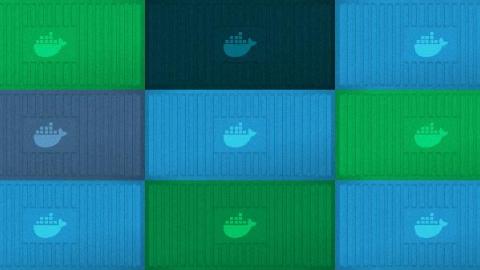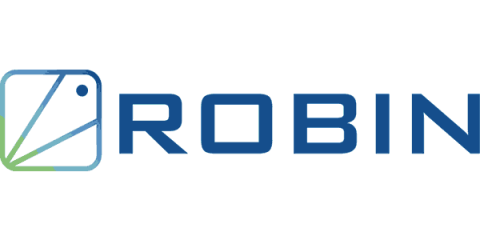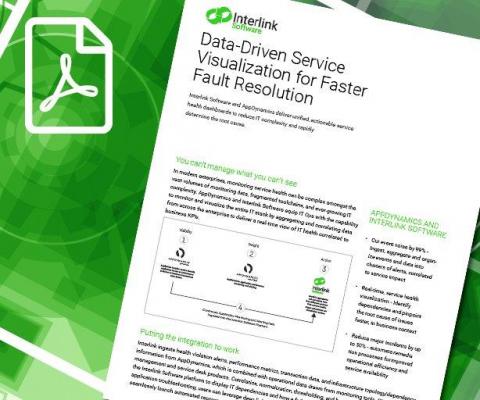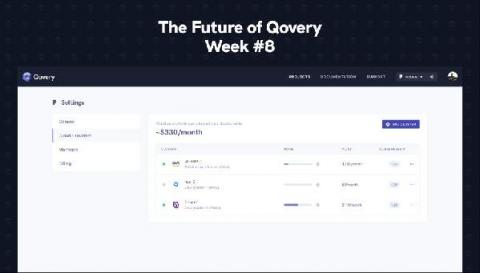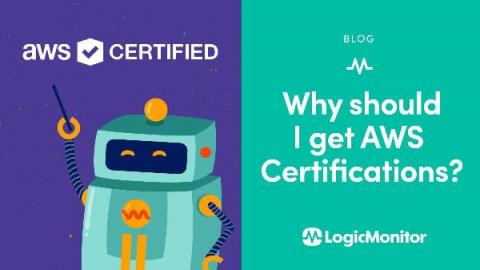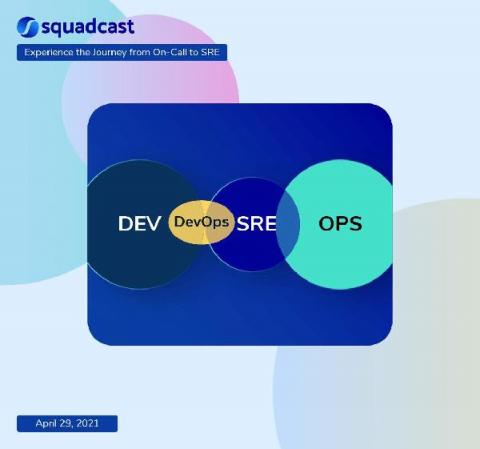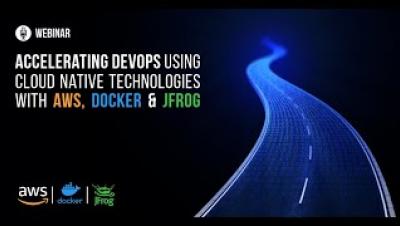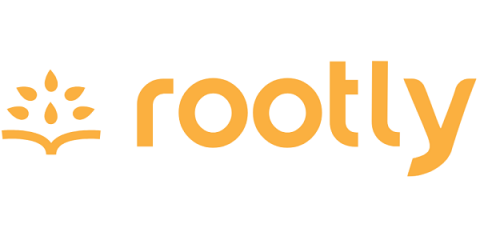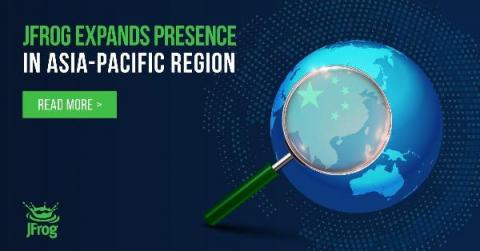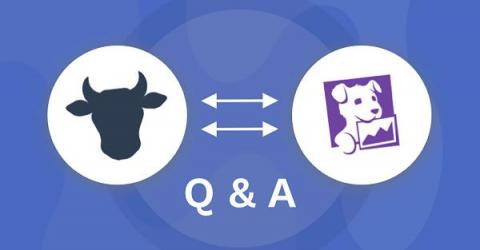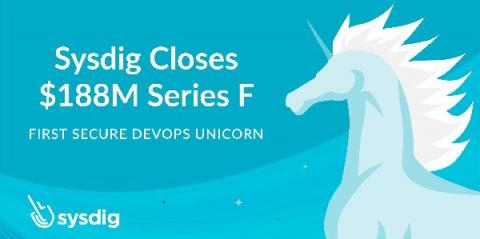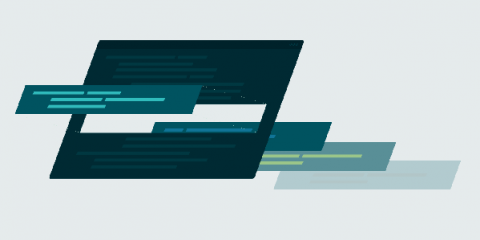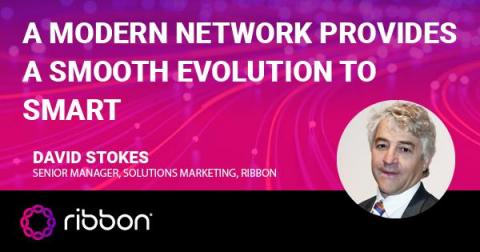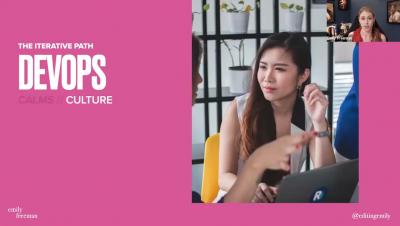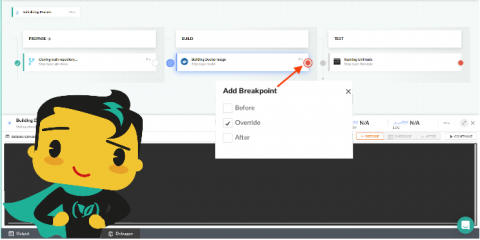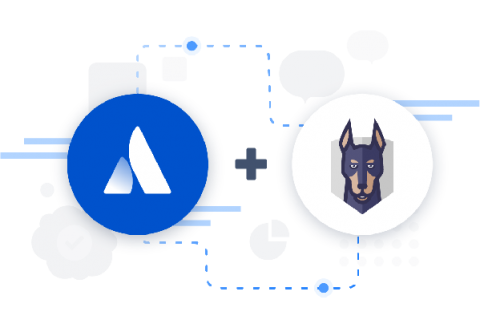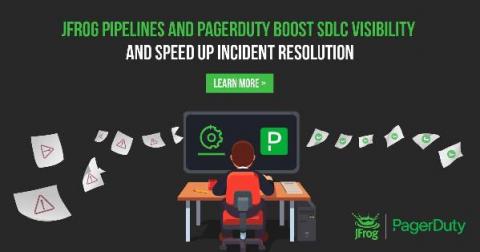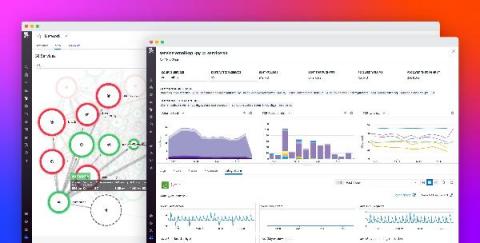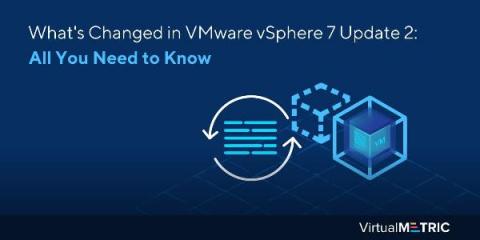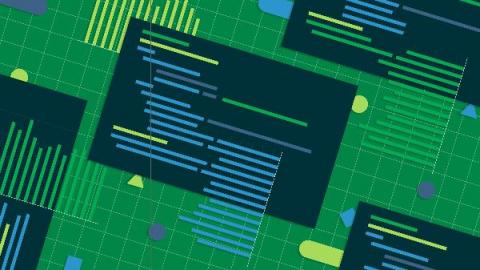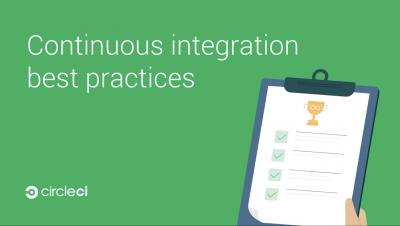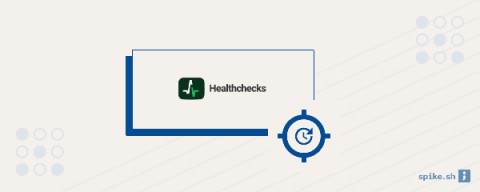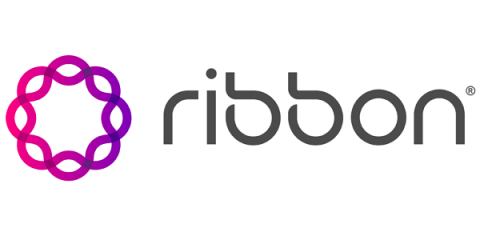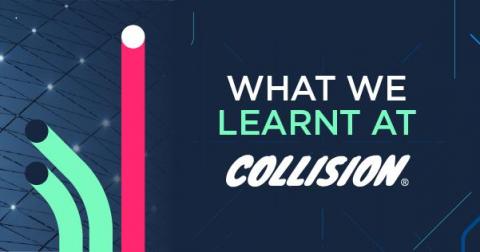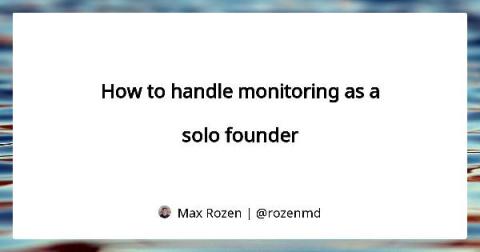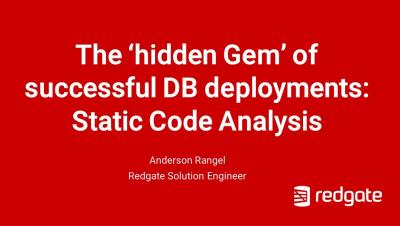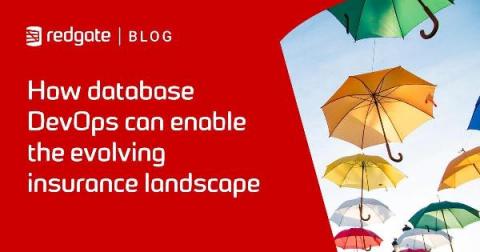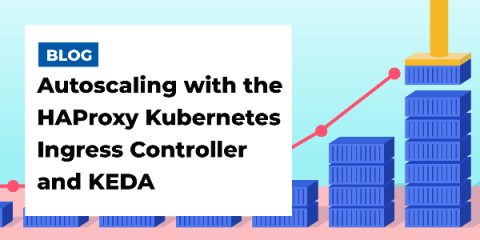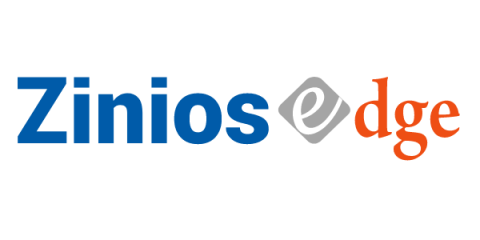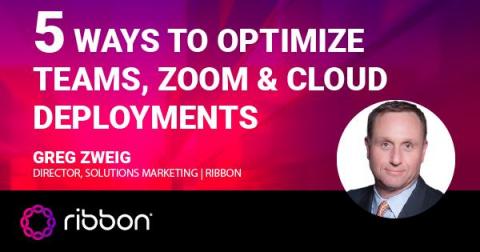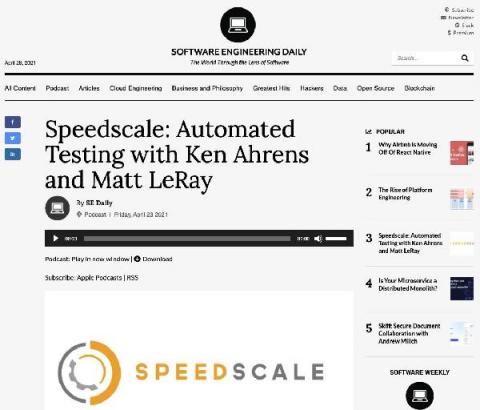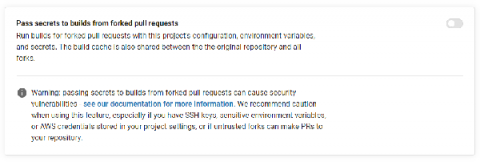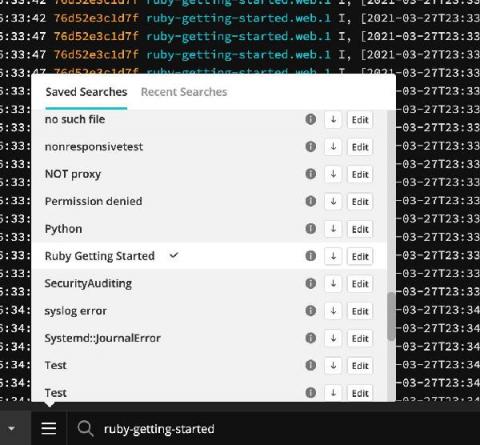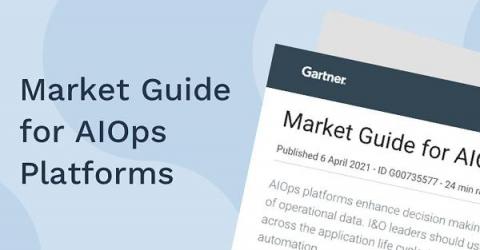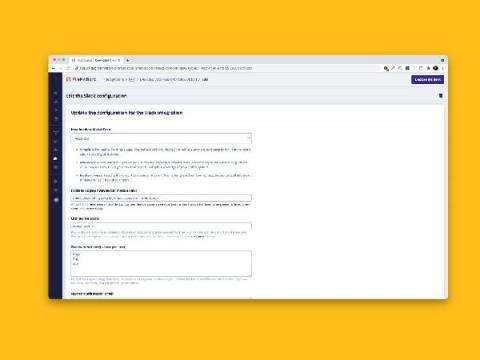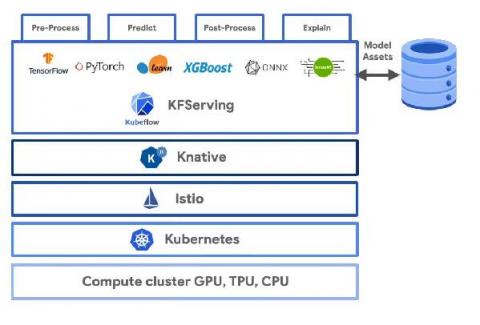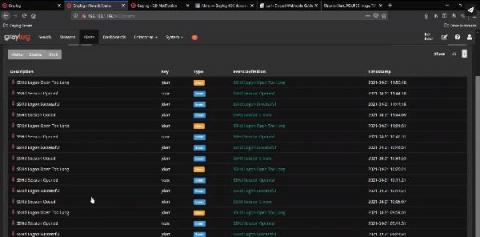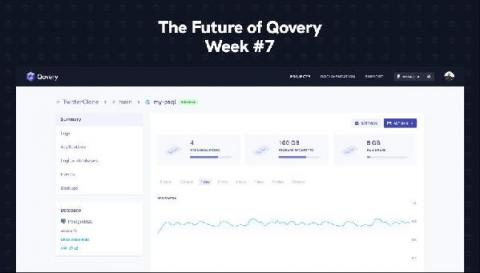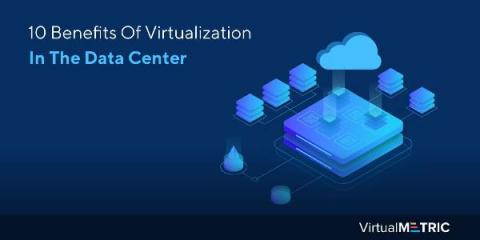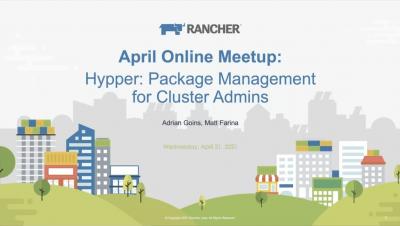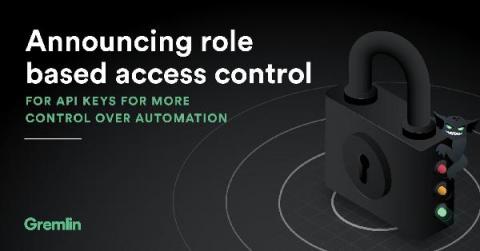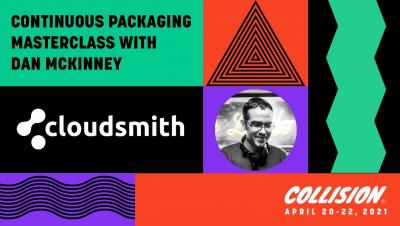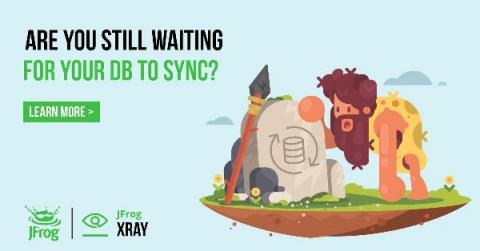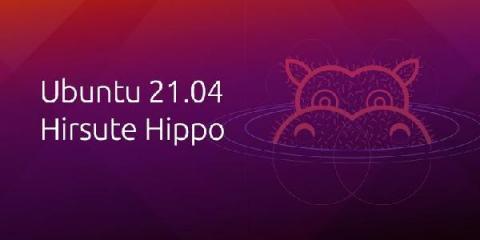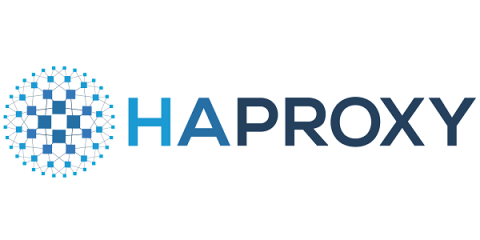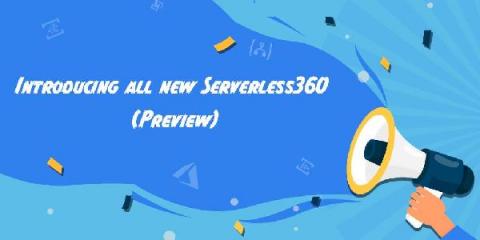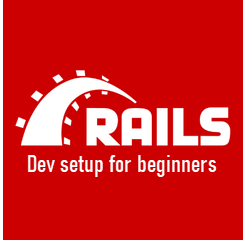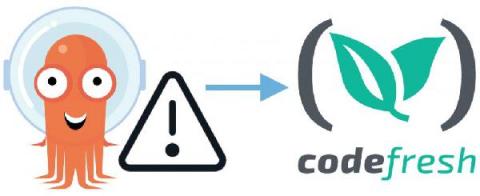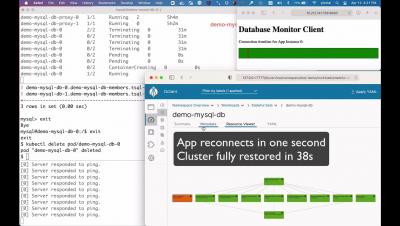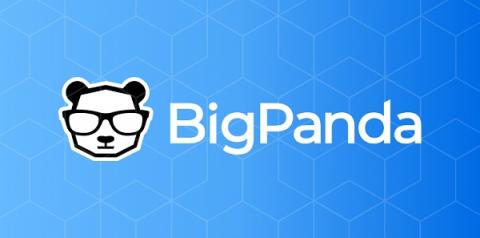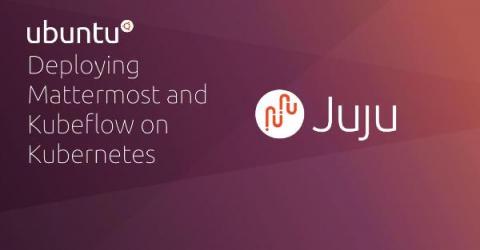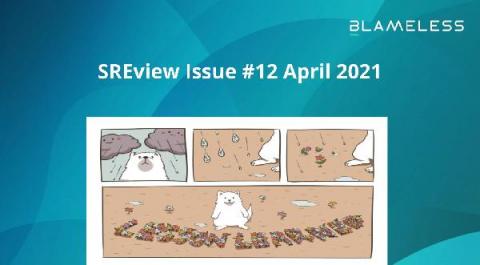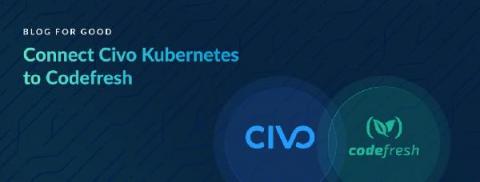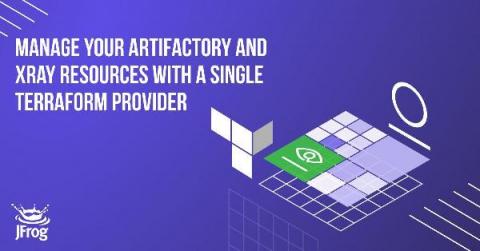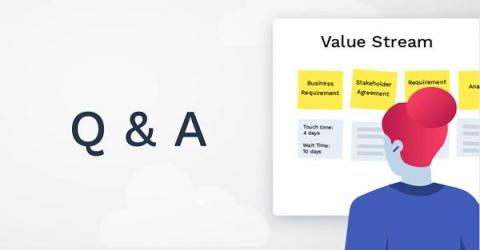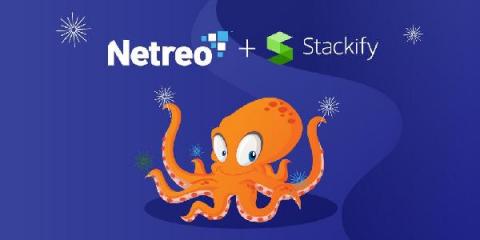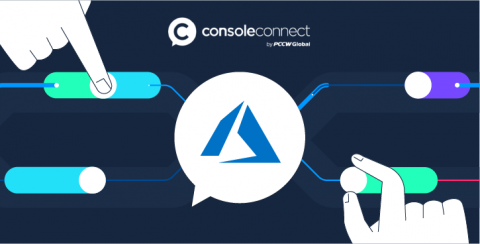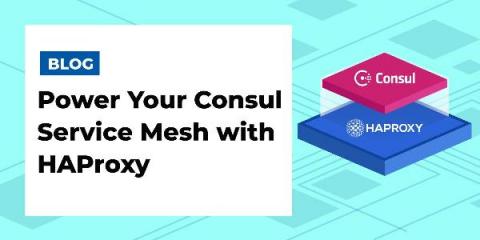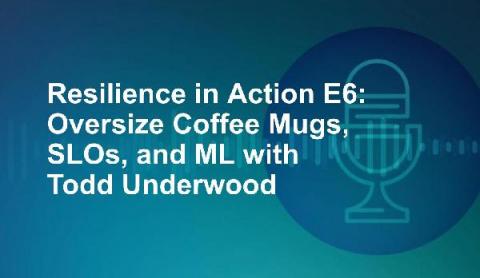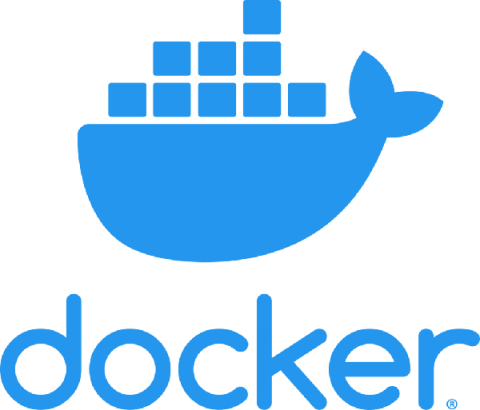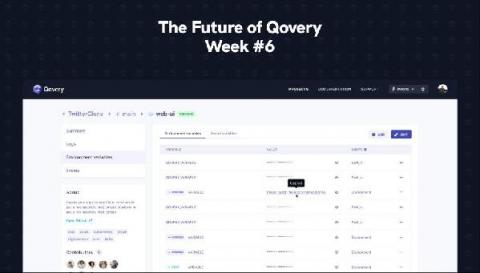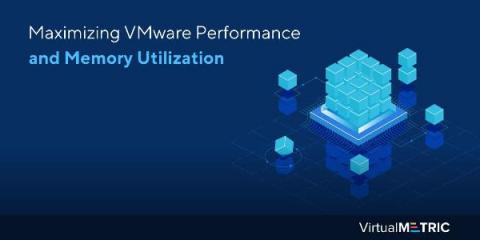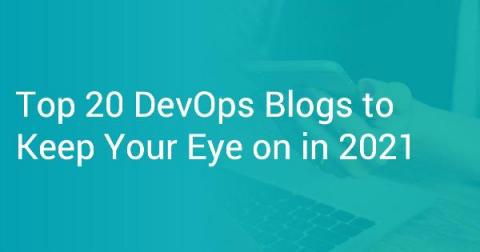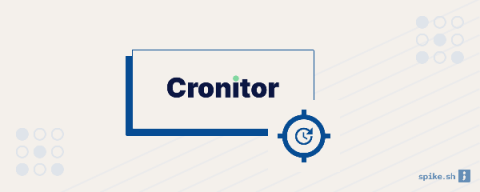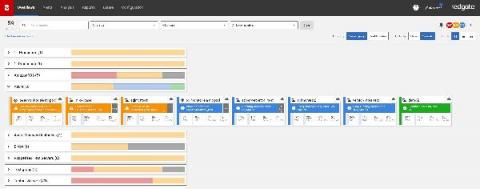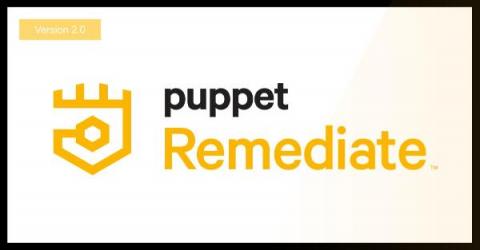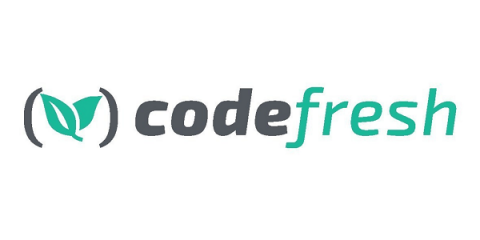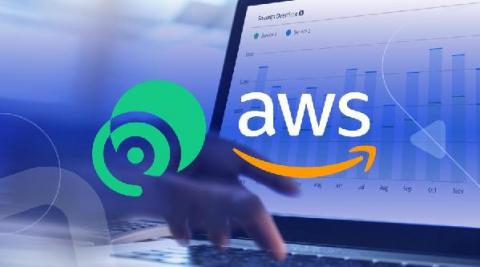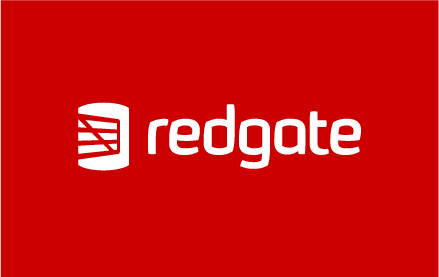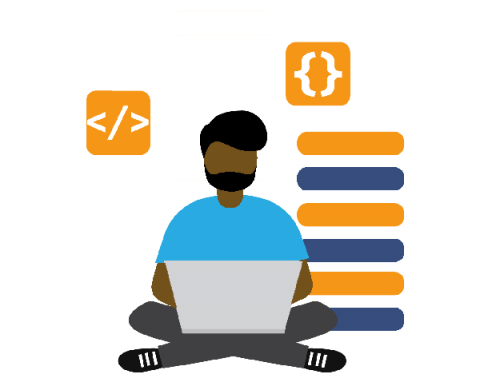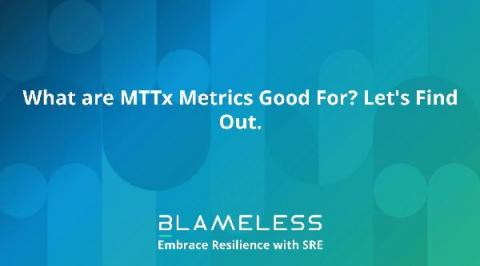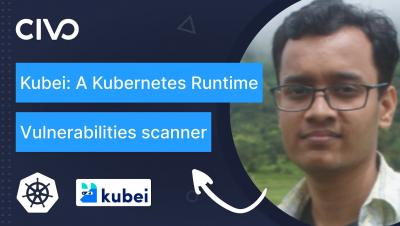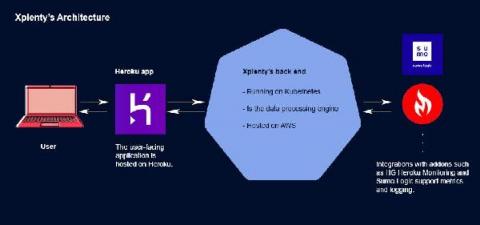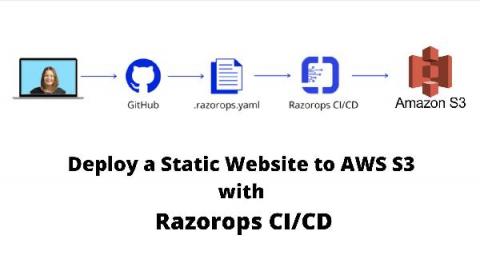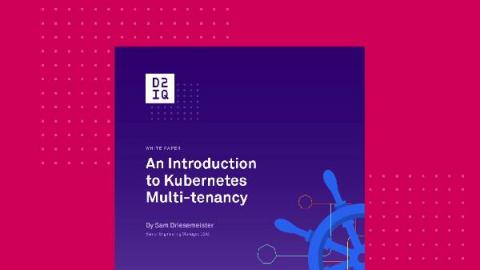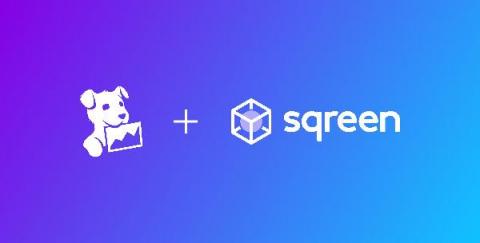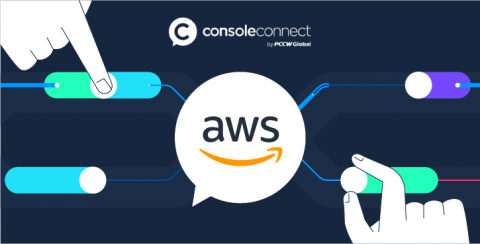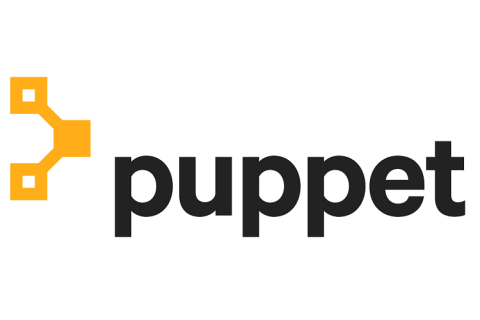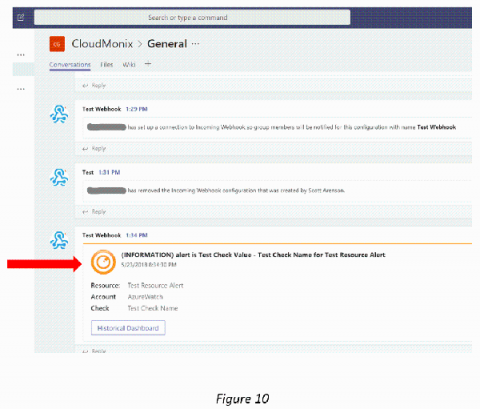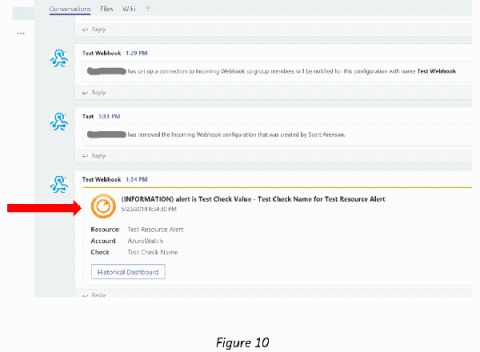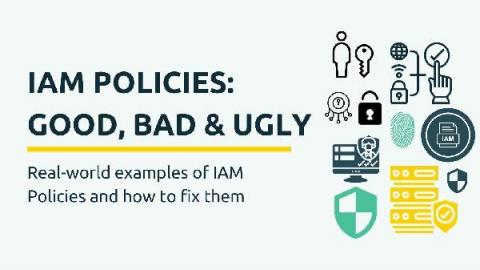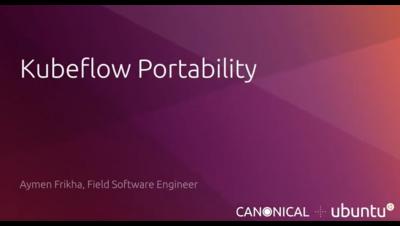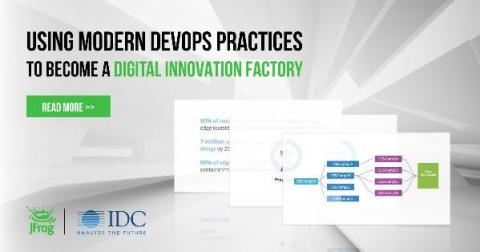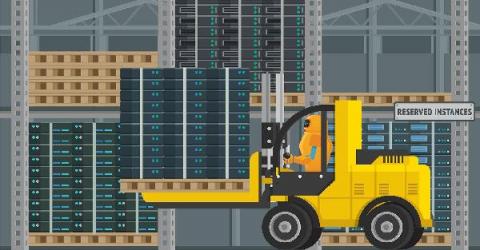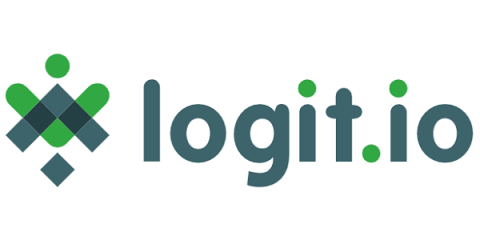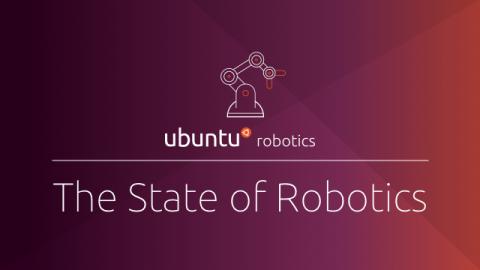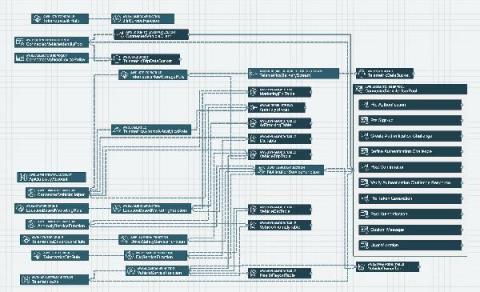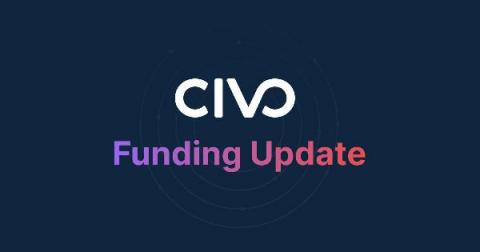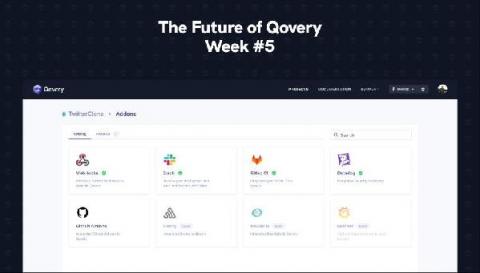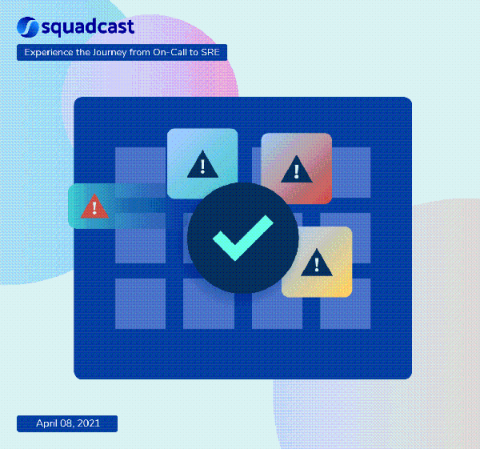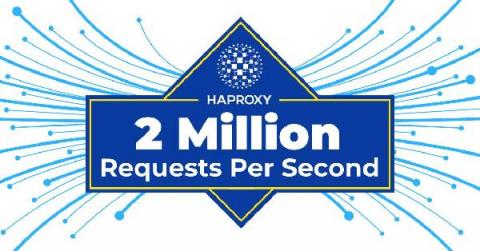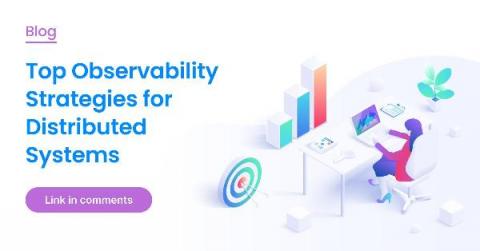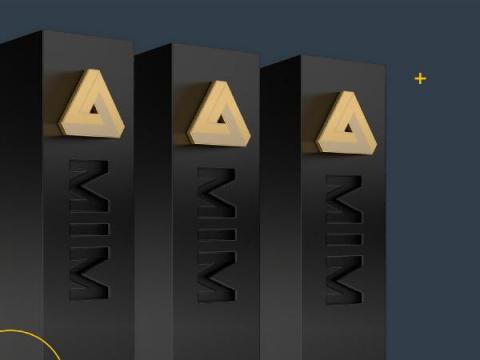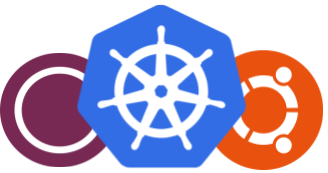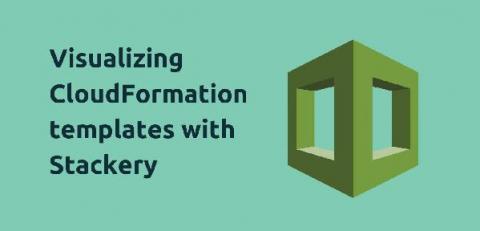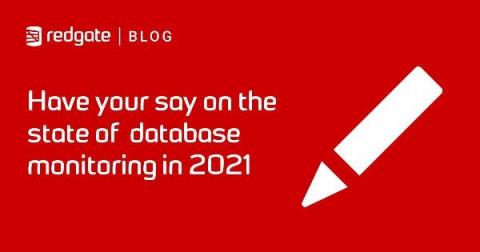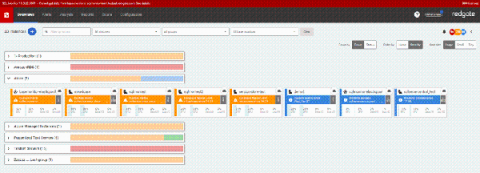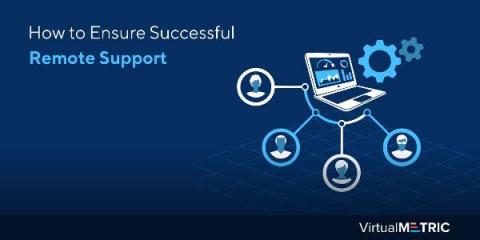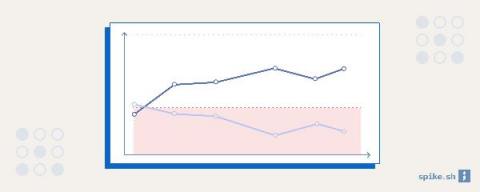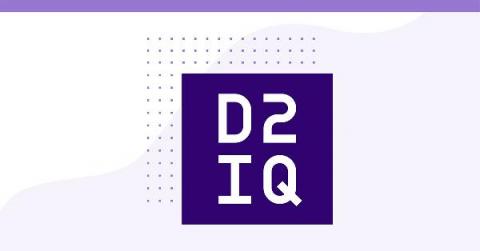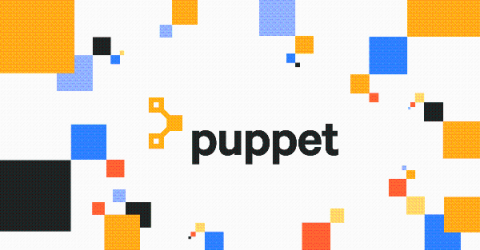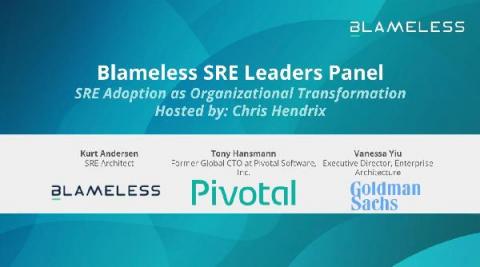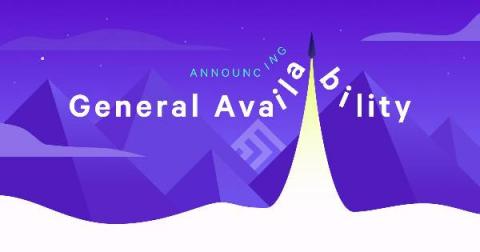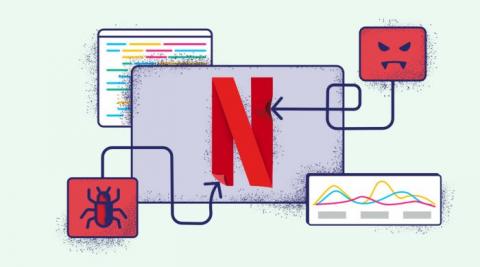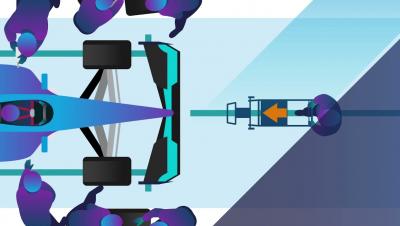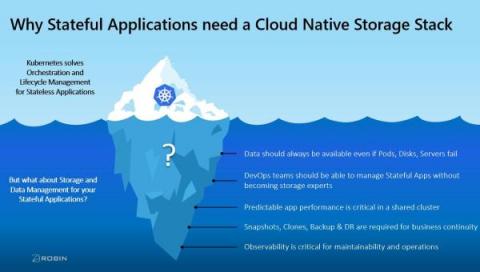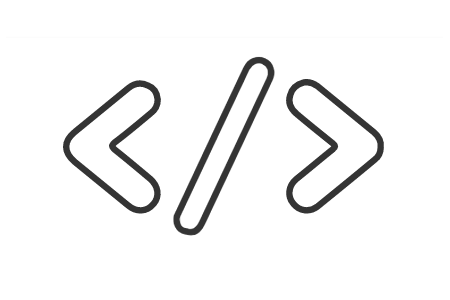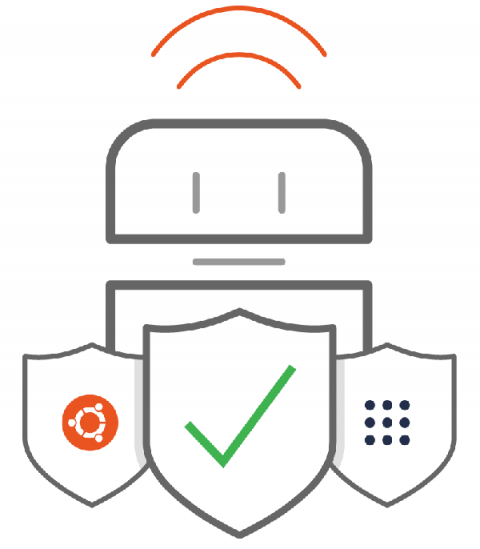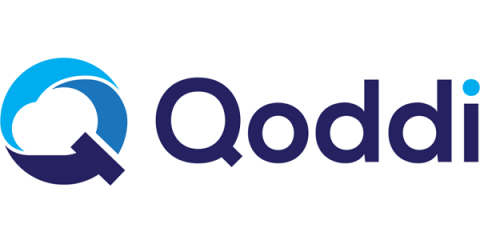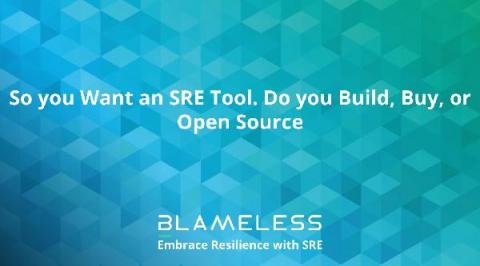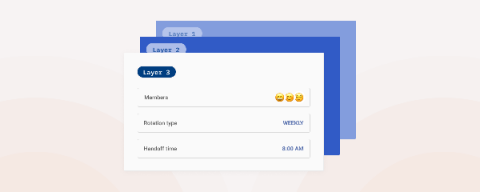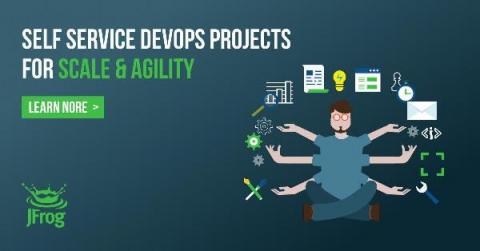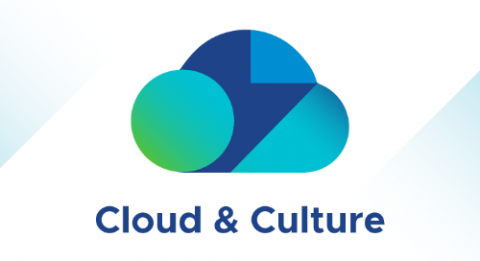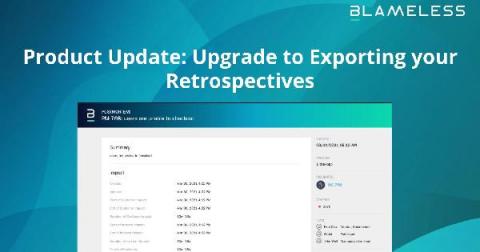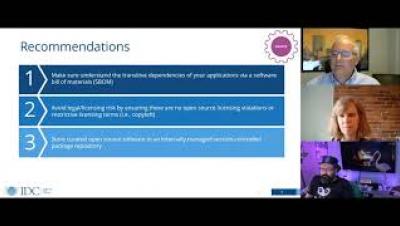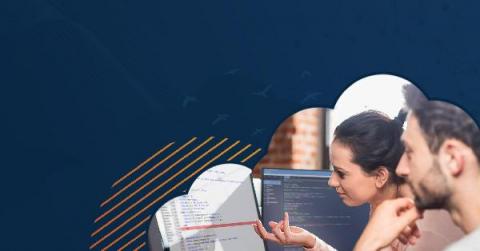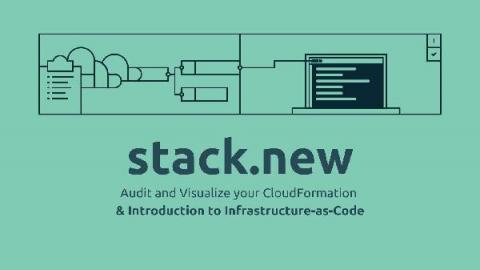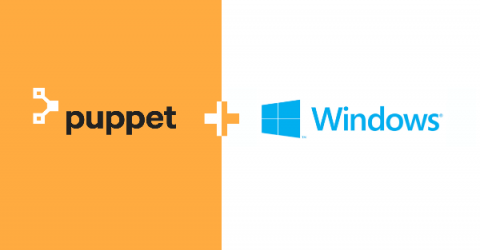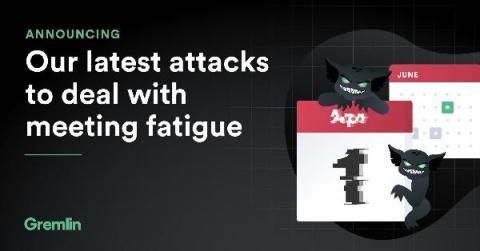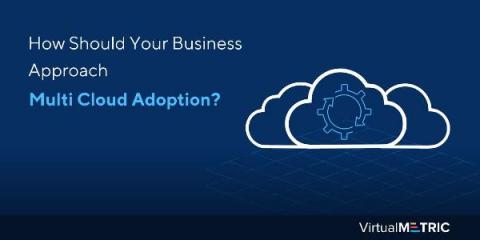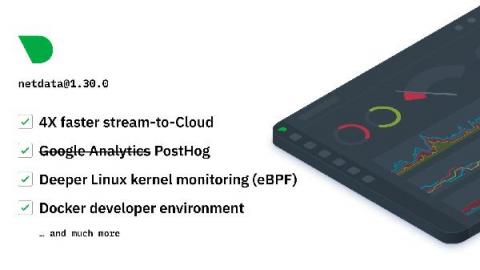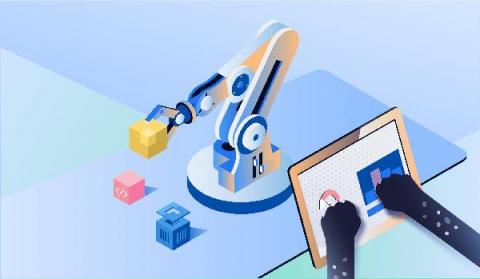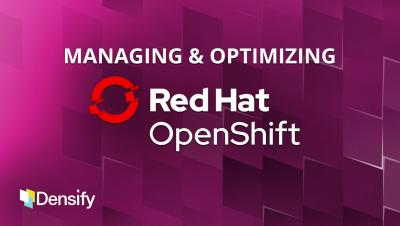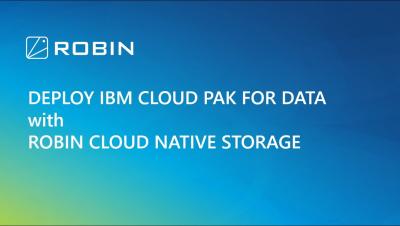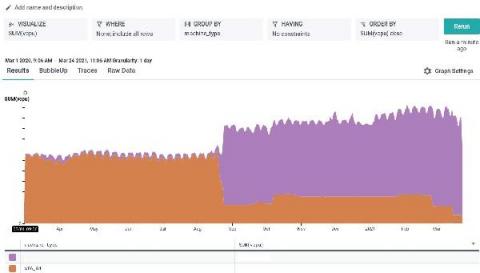Operations | Monitoring | ITSM | DevOps | Cloud
April 2021
Guide to using Docker for your CI/CD pipelines
Docker is a platform for developers and sysadmins to develop, deploy, and run applications using containers. Docker is also referred to as an application packaging tool. This means that enabled applications can be configured and packaged into a Docker image that can be used to spawn Docker containers that run instances of the application. It provides many benefits including runtime environment isolation, consistency via code, and portability.
Learn how to use Atlassian Open DevOps and Codefresh
How to build a CI/CD pipeline with Docker
I talk with many of my fellow engineers at conferences and other events throughout the year. One thing I like demonstrating is how they can implement a continuous integration/continuous deployment (CI/CD) pipeline into a codebase with very little effort. In this post I will walk through some demo code and the CircleCI config that I use in the demonstration. Following these steps will show you how to implement CI/CD pipelines into your code base.
Spawn Demo
Five Reasons To Choose Dell and Robin Cloud Native Platform For AI/ML (Blog series - Part 3 of 3)
In part 1 and part 2 of this series, we examined how AI/ML can help improve healthcare and the challenges faced by AI/ML teams in realizing the benefits respectively. In this part, we will explore how Robin and Dell can help overcome these challenges.
Robin.io Wins The Automation Solution Award at FutureNet World 2021
Robin.io continues to grab the attention of telecom industry peers and thought leaders with its approach to automation and orchestration of complex 5G networks.
Un-Excuse-ing Upgrades
Interlink Software and AppDynamics deliver unified, data-driven Service Visualization and faster fault resolution.
We are delighted to share news of our partnership with leading, real-time Application Performance Monitoring (APM) vendor Cisco AppDynamics and are now a fully-fledged member of their Integration Partner Program (IPP.) For our mutual enterprise customers service affecting issues can lie undetected in the vast volumes of data generated by the multiple, disconnected tools used to monitor their multi-cloud environments, applications and technical solutions.
Learn how to build your cloud migration business case in minutes
Announcing support for the AWS managed Lambda Layer for OpenTelemetry
Datadog’s support of OpenTelemetry—a vendor-agnostic, open source set of APIs and libraries for collecting system and application telemetry data—has helped thousands of organizations implement monitoring strategies that complement their existing workflows. Many of our customers leverage OpenTelemetry for their server- and container-based deployments, but also need visibility into the health and performance of their serverless applications running on AWS Lambda.
Monitoring for Success: What All SREs Need to Know
The last ten years have seen a massive change in how IT operations and development enable business success. From virtualization and cloud computing to continuous delivery, continuous integration, and rapid application development, IT has never been more complex or more critical to creating competitive advantage. To support increasingly Web-Scale IT operations and wide-scale cloud adoption, applications now operate as services.
Seamless Cloud account management - The Future of Qovery - Week #8
During the next two weeks, our team will work to improve the overall experience of Qovery. We gathered all your feedback (thank you to our wonderful community 🙏), and we decided to make significant changes to make Qovery a better place to deploy and manage your apps. This series will reveal all the changes and features you will get in the next major release of Qovery. Let's go!
A Guide to AWS Certifications
If you’re interested in cloud computing, AWS certifications are one of the most rewarding paths to a dynamic career. As a worldwide leader in cloud infrastructure service, Amazon prepares certified experts who are highly sought after by IT organizations around the world. Did you know that 94% of organizations use a cloud service and 30% of their IT budgets are allocated to cloud computing?
7 Ways SRE Is Changing IT Ops And How To Prepare For Those Changes
Accelerating DevOps Using Cloud Native Technologies With AWS, Docker & JFrog
How Kubernetes Can Both Help and Hinder Incident Management Teams
Kubernetes makes it easier in certain ways to manage reliability. But incident response teams and SREs must also be prepared to handle the unique reliability challenges that K8s creates.
How NOT to take a side project to startup - Dev Matters S1E03
Extinguishing our performance fires and rebuilding for the future
Fireside Chat with Jeff Smith and Matt Stratton Failover Conf 2021
Fireside Chat with Jesse Robbins and Kolton Andrus Failover Conf 2021
Fireside Chat with Ines Sombra and Ana Medina Failover Conf 2021
JFrog Expands APAC Presence To Support Growing DevOps Adoption
Calculating a state over multiple services
These days many setups have a lot of redundancy and you may not want to send notifications during the night, just because one of multiple http servers has a problem. This blog post will show you how to setup a single service with a state combining multiple other services.
Q&A from the Moogsoft/Datadog Fireside Chat
On April 15th Moogsoft’s VP Marketing, John Haley, welcomed Datadog Product Manager, Alex Vetras, along with DevOps Institute Chief Ambassador, Helen Beal, and Moogsoft’s CTO, Dave Casper, for an informal roundtable exploring how users can now see rich-context incidents from across the full stack in minutes, and the opportunities this presents to organizations.
Sysdig Raises $188M at a Valuation of $1.19B to Secure Modern Cloud Applications
Atlassian Open DevOps Overview Video
Building CI/CD pipelines using dynamic config
Creating robust, manageable, and reusable functionality is a big part of my job as a CI/CD engineer. Recently, I wrote about managing reusable pipeline configuration by adopting and implementing pipeline variables within pipeline configuration files. As I showed in that tutorial, pipeline variables and orbs have added some flexibility to this process, but they are still a bit limited.
Introducing dynamic config via setup workflows
With the new release of dynamic config via setup workflows, CircleCI customers can now use jobs and workflows, not only to execute work but to determine the work they want to run. We built dynamic config because we know our users want more dynamism in the CircleCI build process. Historically, our platform has been very deterministic: the config is pre-set in a file based on the revision for a given pipeline.
A Modern Network Provides a Smooth Evolution to Smart
“Smart” is the buzzword for strategic industries operating in Energy, Utilities, and Transportation. We are also starting to see this “Smart” nomenclature used in local authorities, defense and public services.
Leaving the Nest: Guidelines, guardrails, and human error by Laura Santamaria Failover Conf 2021
Implementing DevSecOps in the DoD by Nicolas Chaillan Failover Conf 2021
Pragmatic Incident Response: Lessons learned from failures by Robert Ross Failover Conf 2021
Whats Next for DevOps by Emily Freeman Failover Conf 2021
The Evolution of Observability and Monitoring panel discussion Failover Conf 2021
The Evolution of Teams & Culture panel discussion Failover Conf 2021
How to create a Kubernetes cluster at Civo
Enhanced Security and Lifecycle Management Features in VMware vSphere 7.0 Update 2
Atlassian Open DevOps and Codefresh
Codefresh is excited to partner with Atlassian on their new Open DevOps launch. Codefresh is offering native support for connecting the two platforms and giving better visibility on deployments and features of each deployment for our mutual customers. At the heart of this integration is the Codefresh App; which can be found on the Atlassian Marketplace. Simply define Codefresh as the CI/CD partner that will connect to Atlassian’s DevOps API.
Integrate security into development with Snyk, now a seamless part of Bitbucket Cloud
Four Key Challenges To Adopting AI/ML In Healthcare (Blog series - Part 2 of 3)
In part 1 of this series, we examined how AI/ML can help improve healthcare. AI/ML is an ambitious undertaking that promises to revolutionize healthcare. Getting excited is easy, but where do you start and why is it not just another empty promise? In fact, despite all these promises and futures, most AI/ML projects fail and don’t deliver. The failure rate of AI/ML projects is starting to make some wonder if this is real or hype.
JFrog and PagerDuty Extend Ecosystem Integration
Monitor cloud endpoint health with Datadog's cloud service autodetection
Your modern cloud-hosted applications rely on a number of key components—such as databases and load balancers—that are managed by the cloud provider. While these cloud resources can reduce the overhead of maintaining your own infrastructure, capturing and contextualizing monitoring data from services you don’t own can be difficult.
What's Changed in VMware vSphere 7 Update 2: All You Need to Know
VMware has recently released vSphere 7 Update 2, and there is a lot of new stuff to look out for. vSphere, VMware’s server virtualization product, has been an industry favorite for a long time. The vSphere 7 came out in April 2020, and this is so far the second update to it, hence the name. When you look at the changes they’ve rolled out, you’ll know that they are really focusing on some key areas. As a result, VMware infrastructure is getting pretty solid and modern.
Announcing Services Discovery for tracking and improving service reliability
Gremlin helps teams proactively improve the reliability of their systems by running chaos experiments on infrastructure including hosts, containers, and Kubernetes clusters. But as microservice-based architectures and automated cloud platforms become the norm, engineers are shifting their focus from managing infrastructure to managing services. In order to keep these services as resilient as possible, they need tools that can help them find failure modes, reduce incidents, and improve availability.
How to deploy an application on Friday
No one likes giving their weekends up to fix release issues. Developers and operations teams are traditionally hesitant to make changes or deploy applications on a Friday, in case something goes wrong and they have to spend their weekend making emergency fixes. Or worse, trying to roll back changes that were made. However, with a strong set of practices and a reliable deployment pipeline, there should be no reason why a deployment cannot happen anytime — even on a Friday afternoon.
Chaos Engineering in 60 seconds - Attack a service
Announcing Services Discovery for tracking and improving service reliability
Best practices of continuous integration
How to measure the impact of continuous integration
To learn more about continuous integration, visit: https://circleci.com/continuous-integration/
GitOps Use Cases You May Not Have Considered
GitOps is growing in popularity. You’ve probably seen it mentioned on Reddit or dev.to. But what the heck is GitOps? Broadly speaking, GitOps takes the principles of Git and CI-powered workflows favored by software developers — commonly used to automate the process of building, testing and deploying software — and applies them to other business processes.
Test Azure Service Bus Performance by Generating a Million Test Messages
Introduction to cron job monitoring with Healthchecks
Software teams use cron jobs to handle many important tasks like database backups and maintenance scripts. Cron jobs make sure that your applications are behaving as they should, but cron job failures are often silent and not noticed until the problem becomes worse. In this guide, we will learn how to stay aware about cron job failures by using Healthchecks.
Improve Your CMDB for Business Outcomes with Application Dependency Mapping
A configuration management database (CMBD) is a centralized repository that stores information about all the significant entities in your IT environment. These can include your hardware, installed software applications, documents, business services, and even the people who are part of your IT system. The CMDB is designed to help you maintain and support the interrelationships between the configuration items (CIs) within a vast IT structure.
Integrating a Cloudsmith repository with a Harness CD pipeline
In this blog, we will walk through the process of configuring a private Cloudsmith repository as an artifact source for a Harness Continuous Deployment pipeline. Harness is a Continuous Deployment platform that allows you to easily automate the deployment of your software to your infrastructure and environments.
Pineland Telephone Cooperative Upgrades Communications Network with Ribbon IP Optical Solutions
What is Site Reliability Engineering [Simple Intro to SRE]
What We Learnt At Collision 2021
Why VPS Plans are Cheaper than Shared Hosting
You might be looking around for a new web host, or trying to get a better deal. You notice VPS plans are incredibly cheap - as low as $3-5 per month, while the cheapest shared hosting is around $10 per month. You wonder, "How is this possible?!" - especially when people recommend moving to a VPS once a site becomes popular. Let's discuss what these are first, before going into why cheaper doesn't necessarily mean better for you and your business.
The hidden Gem of successful DB deployments: Static Code Analysis
How database DevOps can enable the evolving insurance landscape
Autoscaling with the HAProxy Kubernetes Ingress Controller and KEDA
One of the greatest strengths of containers is the ability to spin more of them up quickly. As the volume of traffic to your application increases, you can create more application containers on the fly to handle it, in almost no time at all. Kubernetes ships with autoscaling baked in, giving you the power to scale out when the system detects an increase in traffic—automatically!
#AskSleuth Elasticsearch: problem solver or trouble maker?
How to Spend Less Time on Bugs and More Time on Features
How CloudZero Measures Cost Per Customer
OpenStack CentOS alternatives:7 reasons to migrate to Ubuntu
Looking for OpenStack CentOS alternatives after recent changes in the CentOS project? Think Ubuntu – the most popular Linux distribution for OpenStack deployments, after CentOS, across development and production environments. Wondering what makes Ubuntu different? Here are seven reasons you should consider Ubuntu when planning your CentOS migration.
5 Digital Transformation Mistakes Infrastructure Leaders Make
Senior IT leaders, motivated by both the changing nature of our economy and more recently, the COVID pandemic, have decisively shifted their focus toward applications. The industry catchphrase for this shift, digital transformation, makes clear its dual nature: directed toward the digital future while at the same time acknowledging that the existing environment must be modernized—in other words, transformed. Tasked with enabling this new breed of applications are operations groups.
How Artificial Intelligence Enhances Customer Service Management?
Throughout the world, the business and service sectors thrive on the best customer service management practices to ensure customer retention, boost customer sentiments to increase the profitability and branding of their business. But amidst the emerging technological advances, AI (Artificial Intelligence), as it is well known, is turning the table for businesses in winning the game of gaining customer trust and loyalty.
How should start-ups court software talent?
Five Ways Containerized eSBCs Optimize Teams, Zoom & Other Cloud Communications Deployments
Enterprises are using Unified Communications as a Service (UCaaS) solutions like Microsoft Teams and Zoom, and Contact Center as a Service Solutions (CCaaS) like Five9 and Genesys to improve communications, simplify operations, and accelerate IT agility. As the COVID-19 outbreak clearly demonstrated, UCaaS and CCaaS solutions are ideal for delivering enterprise communications services to remote workers, mobile users, and small/home offices.
Five Ways Containerized eSBCs Optimize Teams, Zoom & Other Cloud Communications Deployments
Enterprises are using Unified Communications as a Service (UCaaS) solutions like Microsoft Teams and Zoom, and Contact Center as a Service Solutions (CCaaS) like Five9 and Genesys to improve communications, simplify operations, and accelerate IT agility. As the COVID-19 outbreak clearly demonstrated, UCaaS and CCaaS solutions are ideal for delivering enterprise communications services to remote workers, mobile users, and small/home offices.
4 Characteristics of Monitoring Essential to Implementing DevOps
In the new world of rapid releases, continuous change, and increasingly high user expectations, more organizations are embracing DevOps. One of the primary drivers for adopting DevOps is speed — particularly the reduction of risk at speed. As DevOps seeks to reduce risk and deliver insight at an increasingly faster pace, new tools have emerged in the monitoring space. But these tools alone will not deliver us into the low-risk world of DevOps — not without new and updated thinking.
#AskSleuth Simple, Why Redis?
What Comes After Kubernetes?
You probably can’t believe I’m asking that question. It’s like showing up to a party and immediately asking about the afterparty. Is it really time to look for the exit? No…but yes. We used to deploy apps on systems in data centers. Then we moved the systems to the cloud. Then we moved the apps to containers. Then we wrapped it all in Kubernetes for orchestration, and here we are. Each advance in technology unlocks doors we couldn’t reach before.
Software Engineering Daily Podcast
Large portions of software development budgets are dedicated for testing code. A new component may take weeks to thoroughly test, and even then mistakes happen. If you consider software defects as security issues then the concern goes well beyond an application temporarily crashing. Although even minor bugs can cost companies a lot of time to locate the bug, resolve it, retest it in lower environments, then deploy it back to production.
CI/CD Pipeline Security 101
In our previous post, we discussed the recent security incident at Codecov and the following investigation at Mattermost. As a follow-up to that we wanted to share some of the basic design principles as well as a handful of more technical tips and tricks around CI/CD pipeline security that helped Mattermost come out of the incident unscathed.
Using Dokku On DigitalOcean
A DBA's Habits for Success: CMMI (Part One)
New Gartner AIOps Platform Market Guide Shows More Use Cases for Ops and Dev Teams
Gartner jumps right into it, describing a reorientation of a tool that has previously focused on IT service management and automation. AIOps is now also enabling a variety of new observability use cases for DevOps and Site Reliability Engineering (SRE) teams. This blog presents the guide’s major findings and a link so you can read the report for more details. About the AIOps Platform Market
FireHydrant April 2021 Product Updates: Incident Tags & Customizable Slack Incident Modals
We're excited to announce the release of two new features this month: customizable Slack incident modals and Incident Tags. Keep reading to more about how they can help your teams manage incidents better!
Ubuntu Server 21.04:What's new?
Ubuntu Server 21.04 (Hirsute Hippo) brings significant improvements to automation and stability fronts with new extensions to the Ubuntu Server Live Installer and phased updates in the Advanced Package Tool (APT).
Fintech AI/ML on Ubuntu
The financial services (FS) industry is going through a period of change and disruption. Technology innovation has provided the means for financial institutions to reimagine the way in which they operate and interact with their customers, employees and the wider ecosystem. One significant area of development is the utilisation of artificial intelligence (AI) and machine learning (ML) which has the potential to positively transform the FS sector.
What is KFServing?
TL;DR: KFServing is a novel cloud-native multi-framework model serving tool for serverless inference. KFServing was born as part of the Kubeflow project, a joint effort between AI/ML industry leaders to standardize machine learning operations on top of Kubernetes. It aims at solving the difficulties of model deployment to production through the “model as data” approach, i.e. providing an API for inference requests.
Can I Send an Alert to Discord?
This is a great question. The answer is yes. You can send Graylog alerts via email, text, or Slack, and now Discord. Yes Discord! The growth and use of Discord has transformed from just many Gaming users to businesses using it as a communication platform. Many businesses like: Gaming Developers, Publishers, Journalists, Community and Event Organizers use Discord. Discord lets Gamer Developers work in teams with each other on their projects.
Cloud Migration Strategy [Guide]
Migrating to cloud infrastructure is one of the most critical requirements for modern enterprises to ensure long-term sustainability. Initially, there was a general apprehension about adopting cloud technology and developing a cloud migration strategy; certain aspects like security and resilience were concerns. But today, with increasing technological advancements and familiarity, there is not an iota of doubt that the advantages of adopting cloud technology have far outnumbered the few drawbacks.
The easiest way to deploy your database - The Future of Qovery - Week #7
During the next four weeks, our team will work to improve the overall experience of Qovery. We gathered all your feedback (thank you to our wonderful community 🙏), and we decided to make significant changes to make Qovery a better place to deploy and manage your apps. This series will reveal all the changes and features you will get in the next major release of Qovery. Let's go!
10 Benefits Of Virtualization In The Data Center
Are you looking for ways to improve your data center performance and resource utilization? Consider employing virtualization. Virtualization offers a cost-effective solution to satisfy the growing need for storage capacities and IT support required by most organizations. It is a process that allows you to scale up your physical resources to meet your increasing demands. You can virtualize physical servers, networking, storage, and other infrastructure components to enhance your data center operations.
April Online Meetup - Hypper: Dependency-aware package management for Kubernetes
Comparison: Snyk, Aqua Security, Sysdig
Security testing tools help us to monitor our cloud-native resources for potential vulnerabilities throughout our development lifecycle. By flagging security vulnerabilities early, our teams can react on time to reduce potential damage to our end-users and our business. This post will compare three different Security scanning tools that focus on cloud-native infrastructure and application security, namely.
Announcing role based access control for API keys for more control over automation
Today, Gremlin is excited to announce the ability to create an API key that can perform actions with the same set of permissions as your user account. This allows you to automate Gremlin tasks safely and securely.
Collision 2021 - Securing Software Pipelines with Continuous Packaging
Puppet Camp - Become a better Puppet developer: Keynote
Editing Pull Requests just got a little easier
Creating Chaos to Achieve Reliability
How can creating chaos achieve better reliability? Chaos and reliability might seem mutually exclusive, but through the use of Chaos Engineering, SREs can bring about meaningful changes to system resiliency.
Continuous Monitoring: What Is It and How Is it Impacting DevOps Today?
Continuous monitoring (CM), also referred to continuous control monitoring (CCM), is an automated process that allows DevOps teams to detect compliance and security threats in their software development lifecycle and infrastructure. Traditionally, businesses have relied on periodic manual or computer-assisted assessments to provide snapshots of the overall health of their IT environment.
[Webinar] Observability and Resilience in Microservice Environments with Komodor & Epsagon
How We Improved Our DB Sync Performance | JFrog Xray
What Is SaaS Finance? (Plus 12 Metrics You Should Be Monitoring)
Ubuntu 21.04 is here
22 April 2021: Today, Canonical released Ubuntu 21.04 with native Microsoft Active Directory integration, Wayland graphics by default, and a Flutter application development SDK. Separately, Canonical and Microsoft announced performance optimization and joint support for Microsoft SQL Server on Ubuntu.
Monitoring in a Cloud-Native Era
Ribbon's Partner Program Receives 5-Star Rating in the 2021 CRN® Partner Program Guide
HAProxy Reaches Over 2 Million Requests per Second on a Single Arm-based AWS Graviton2 Instance
Introducing all new Serverless360 in preview
The future of testing with Launchable
Ruby on Rails Development Setup for Beginners
Today we will install Ruby on Rails (RoR) on a Debian Linux operating system (Ubuntu 18.04 LTS). With that said, RoR is compatible with other operating systems with just a few tweaks. This blog will assist you in installing RoR with a simple step-by-step process. Your installation may differ, for other operating systems refer to this site. I am new to developing and have been using Ubuntu 18.04 LTS, a flavor of Debian Linux, for my projects.
Trigger a Codefresh Pipeline from ArgoCD
Codefresh is an awesome platform for doing GitOps deployments to Kubernetes. Starting last year, the Codefresh team has been adding rich integrations with Argo CD and Argo Rollouts, GitOps observability dashboards, and more. Codefresh pipelines, in particular, have played an integral role in our customers’ progressive delivery workflows by allowing them to orchestrate all of the testing, analysis, and rollback activities that work in conjunction with Argo CD synchronization.
Tanzu SQL MySQL: Kubernetes Operator Installation
Tanzu SQL MySQL: Deploying MySQL Instances
Tanzu SQL MySQL: HA Failover Demo
Full-stack monitoring for code-to-cloud visibility
The 7 Hues of DevOps
Cloud 66 Feature Highlight: Delete Protection
The true cost of IT Ops, the added value of AIOps
Today’s IT landscape is complex, hybrid, and fast-moving, and the adoption of multi-cloud infrastructure, applications, and new digital transformation initiatives is accelerating. IT operations teams, playing a vital role in enabling the delivery of uninterrupted services and creating business value for enterprises, are finding they need to constantly grow their resources to manage all the moving pieces in their IT stack. This can get expensive … but how much are they spending?
A Day in the Life: James the IT Ops Guy Learns How to Connect All that Data
“Morning, mate,” I greeted Dinesh as he walked into the office. “Nice get up for the big day!” He was wearing a pressed shirt, rather than his usual hoodie. “Thought I’d make an effort, you know,” he grinned. We’d been planning intensely for this moment for the last week or so – our meeting with Charlie, the CIO, to present the results of our Moogsoft experiments and ask for permission to extend the rollout across the enterprise.
Deploying Mattermost and Kubeflow on Kubernetes with Juju 2.9
Since 2009, Juju has been enabling administrators to seamlessly deploy, integrate and operate complex applications across multiple cloud platforms. Juju has evolved significantly over time, but a testament to its original design is the fact that the approach Juju takes to operating workloads hasn’t fundamentally changed; Juju still provides fine grained control over workloads by placing operators right next to applications on any platform.
How to monitor HashiCorp Vault with Datadog
In this series, we’ve introduced key HashiCorp Vault metrics and logs to watch, and looked at some ways to retrieve that information with built-in monitoring tools. Vault is made up of many moving parts, including the core, secrets engine, and audit devices. To get a full picture of Vault health and performance, it’s important to track all these components, along with the resources they consume from their underlying infrastructure.
Tools for HashiCorp Vault monitoring
In Part 1, we looked at the key metrics for monitoring the health and performance of your HashiCorp Vault deployment. We also discussed how Vault server and audit logs can give you additional context for troubleshooting issues ranging from losses in availability to policy misconfiguration. Now, we’ll show you how to access this data with tools that ship with Vault.
SREview Issue #12 April 2021
Using Harness to deploy packages from Cloudsmith
Connect Civo Kubernetes to Codefresh
Codefresh is a DevOps automation platform with Kubernetes and Docker native tools and features. You can create powerful pipelines and utilize the provided dashboards by connecting different Kubernetes clusters and registries to receive further insights into your deployments. Additionally, by enabling GitOps for your repositories you can reach the highest level of confidence in your Kubernetes deployments.
Finserv open source solutions
Five Use Cases for AI/ML in Healthcare (Blog series - Part 1 of 3)
Technology has accelerated changes toward information-based healthcare delivery and management. Today’s multi-disciplinary approach to delivering better healthcare outcomes coupled with advanced imaging and genetic-based customized treatment models depend on AI/ML driven information systems. At Robin.io, we believe machine learning is the life-saving technology that will transform healthcare. AI/ML challenges the traditional, reactive approach to healthcare.
JFrog Artifactory Terraform Provider Gains Xray Functionality
Serverless 101: What Is It, How Serverless Computing Works, Pros and Cons, and More
Coffee Break Webinar Series: Under the Covers of AIOps
Last week DevOps Institute’s Chief Ambassador, Helen Beal, and Moogsoft’s own Chief Evangelist, Richard Whitehead, continued to follow the exploits of DevOps Engineer Sarah and her journey towards AIOps and Observability enlightenment.
The future of testing with Launchable
In this video with with Kohsuke Kawaguchi (KK) from Launchable and Viktor Farcic we talk about testing K8s applications. Do we really need to write all the tests every time we make a change to the source code or make a release? That could take minutes or even hours. Wouldn’t it be better to run only the tests related to the changes we are making or the phase of the lifecycle of an application? Is the future of testing in AI and ML?
Stackify + Netreo Creates a Dev + Ops Powerhouse
TLDR: Stackify is joining with Netreo to bring best-of-breed solutions for developers and IT operations. Together, their observability platform can help both small development teams and the world’s largest enterprises manage and monitor their applications and infrastructure. Stackify has been working for the last 9 years to help software developers monitor and deb their productions applications.
Log Shipping Using Fluent Bit and vSphere with Tanzu
One of the new features that came with the latest update of vSphere with Tanzu was the ability to use TKG Extensions. This powerful framework allows simplified deployment and management of multiple open source projects that are backed by VMware support, including alerting with Prometheus, visualization with Grafana, ingress with Contour, and logging with Fluent Bit.
Why Should My Business Consider Direct Connectivity to Microsoft Azure?
Power Your Consul Service Mesh with HAProxy
Many of you use HashiCorp Consul for service discovery. It makes connecting one backend application or service to another easy: Your Consul servers store a catalog of addresses to all of your services; when an application within the network wants to discover where a service is listening, it asks Consul, which gives it the address.
Resilience in Action E6: Oversize Coffee Mugs, SLOs, and ML with Todd Underwood
We are rolling out Docker v20 to Pipelines in June 2021
Cloud Migration: A Race You Shouldn't Try to Win
Building and running FIPS containers on Ubuntu
Whether running on the public cloud or a private cloud, the use of containers is ingrained in today’s devops oriented workflows. Having workloads set up to run under the mandated compliance requirements is thus necessary to fully exploit the potential of containers. This article focuses on how to build and run containers that comply with the US and Canada government FIPS140-2 data protection standard.
Environment variables and Secrets - The Future of Qovery - Week #6
During the next five weeks, our team will work to improve the overall experience of Qovery. We gathered all your feedback (thank you to our wonderful community 🙏), and we decided to make significant changes to make Qovery a better place to deploy and manage your apps. This series will reveal all the changes and features you will get in the next major release of Qovery. Let's go!
Maximizing VMware Performance and Memory Utilization
VMware is one of the top virtualization software that allows you to create virtual machines and make the best use of your resources. One of the major focuses of virtualization solutions is to enable optimized use of resources like memory and computing power, but overcommitting your hypervisor towards greedy resource management can lead to severe degradation in the overall performance.
Top 20 DevOps Blogs to Keep Your Eye on in 2021
The process of developing software applications has evolved over the years. DevOps has taken over the world, and more and more companies are starting to adopt the DevOps culture in their process. DevOps is a practice of operations where engineering teams work together through the entire software development cycle. It includes functions from development to testing and deployment to production support. Because of that, DevOps has become popular in the industry.
Global Azure: DevOps For the DBA
How to monitor your cron jobs using Cronitor
Cron jobs handle a lot of background plumbing that keep applications running smoothly. But cron job failures often go unnoticed and be disastrous for your users and business. To make sure that you are aware about cron job issues, you should use a cron monitoring tool. In this post, we will see how to get started with Cronitor to monitor your cron jobs.
New SQL Monitor release gives organizations the opportunity to manage their on-premises and cloud databases from a single global dashboard
Puppet Releases Remediate 2.0
As we look to continue to provide value to our Remediate customers, we focused on how we create simple and effective workflows in the product. Our customers have told us there are some really important quality of life features that would go a long way in helping reduce the pain and frustration of remediating vulnerabilities and enable them to better communicate with their security partners.
Using Telepresence 2 for Kubernetes debugging and local development
Telepresence 2 was recently released and (like Telepresence 1) it is a worthy addition to your Kubernetes tool chest. Telepresence is one of those tools you cannot live without after discovering how your daily workflow is improved. So what is Telepresence? It is too hard to describe all the functionalities of the tool in a single sentence, but for now I would describe it as the “Kubernetes swiss army networking tool”.
Q&A: Best Practices for Storing and Analyzing Time-Series Data
The exponential growth of machine generated data in recent years has created the need for solutions purpose-built to handle extremely high-frequency telemetry data. This has driven increasingly more organizations to adopt time series databases and address the unique challenges around ingesting, analyzing, and storing massive amounts of time-series data.
Should You Be an SRE or a DevOps Engineer?
SREs may have better long-term job prospects, but DevOps might be an easier career to pursue.
Creating Custom Slack Commands
Site Reliability Engineers are expected to know everything that’s happening, all of the time. That’s a lot of things! To help you sift through the noise, we’ve developed a feature that lets you find accurate data about your organization on-demand. You can do this by sending custom-designed commands to FireHydrant directly from your integrated Slack account.
Should you ever reinstall your Linux box? If so, how?
Broadly speaking, the Linux community can be divided into two camps – those who upgrade their operating systems in-vivo, whenever there is an option to do so in their distro of choice, and those who install from scratch. As it happens, the former group also tends to rarely reinstall their system when problems occur, while the latter more gladly jump at the opportunity to wipe the slate clean and start fresh. So if asked, who should you listen to?
Visualize the financial impact of RIs and Savings Plans with Eco's Savings Over Time report
When buying AWS Savings Plans and RIs, Spot Eco makes it easy to create a highly utilized and well-balanced blend of Savings Plans and RIs. Leveraging 3rd party Standard RIs (with shorter terms) alongside Convertible RIs, and Savings Plans, Eco helps ensure maximum savings with minimum commitment.
Sleuth + SOC 2 Type II: Our constant commitment to security
In Sleuth’s continuing efforts to help our customers to deliver faster and safer, we have always put security as a top-level business priority. Security and privacy of our customers’ data is always in the forefront of our design, development, and deployment concerns. We understand the level of trust our customers put in us when they connect key systems together with Sleuth.
The Future Of Kubernetes Platforms with Shipa Cloud
Recover automatically from failed deployments with Argo Rollouts and Prometheus metrics
Argo Rollouts is a progressive delivery controller created for Kubernetes. It allows you to deploy your application with minimal/zero downtime by adopting a gradual way of deploying instead of taking an “all at once” approach. Argo Rollouts supercharges your Kubernetes cluster and in addition to the rolling updates you can now do In the previous article, we have seen blue/green deployments.
What's Redgate's plan for PASS?
3D-printed, Sleuth logo UNBOXING
Foundations: What Is Reusable Configuration?
How to build a customized Artifactory image?
Empowering Founding Engineers
Massive tomes have been written on engineering management, but I thought it might be helpful to take a brief minute to discuss setting up your Founding Engineers (FE) for success. For this post I define FEs as the first wave of engineers hired after the founding team. This round of hiring usually takes place after seed funding has been secured and some semblance of initial product/market fit has been achieved.
Automated Kubernetes Optimization with Helm
Cloud 66 Feature Highlight: Archived Application
What's the Difference Between DevOps and DevSecOps?
DevOps vs DevSecOps: Learn the similarities and differences of each agile methodology and the essential processes involved.
Automatically Assess and Remediate the SolarWinds Hack
Incident triage: a key element in your MTTR
One of the key performance indicators for IT Ops is MTTR (Mean-Time-To-Resolution). MTTR essentially measures the length of your incident management lifecycle: from detection; through assignment, triage and investigation; to remediation and resolution. IT Ops teams strive to shorten their incident management lifecycle and lower their MTTR, to meet their SLAs and maintain healthy infrastructures and services. But that’s often easier said than done.
Lift-and-Shift Cloud Migrations: The Good, the Bad, and How To Avoid the Ugly
There are many paths to the cloud, and the one you choose depends on your particular digital transformation requirements and resources. About a decade ago, Gartner cleverly developed an alliterative nomenclature to describe five different migration strategies: the five Rs. That list has evolved over time and there a lot of 5-, 6-, and 7-strategy variations out there.
From lightweight to featherweight: MicroK8s memory optimisation
If you’re a developer, a DevOps engineer or just a person fascinated by the unprecedented growth of Kubernetes, you’ve probably scratched your head about how to get started. MicroK8s is the simplest way to do so. Canonical’s lightweight Kubernetes distribution started back in 2018 as a quick and simple way for people to consume K8s services and essential tools.
Catchpoint Announces Virtual SRE Community Event on June 10
What are MTTx Metrics Good For? Let's Find Out.
Kubei walk-through: A Kubernetes Runtime Vulnerabilities Scanner - Milind Chawre
Multi-instance GPU (MIG) with MicroK8s on NVIDIA A100 GPU
Kubernetes Master Class - How to Update Monitoring After Upgrading to Rancher 2.5
The More You Monitor - What is AIOps?
A Guide to Kubernetes Certifications
In an age of virtualization and cloud computing, developers increasingly use Kubernetes’ open-source platform to manage containerized workloads and services. Kubernetes container became popular because it was impossible to define a resource boundary for multiple applications in a traditional CPU environment. Misuse of resources created an inefficient environment.
Using K8s But Not Overhauling Your DevOps Processes
Kubernetes is now the industry standard for organizations that are born in the cloud. Slowly, many enterprises and mid-level companies are adopting it as the default platform for managing their applications. But we all know, Kubernetes adoption has its own challenges, as well as its associated costs. How do we decide when and what to migrate to Kubernetes? Does migrating to Kubernetes mean overhauling all devops processes?
How to Deploy a Static Website to AWS S3 with Razorops CI/CD
Follow this post to deploy your static website using aws s3 free of cost just in 15 min.
How Much Does AWS Fargate Cost?
Practitioner's Guide: An Introduction to Kubernetes Multi-tenancy
If your organization is adopting multiple Kubernetes clusters, chances are that multiple users or groups have access to these clusters on the same shared infrastructure. Kubernetes multi-tenancy aims to drive efficient use of infrastructure, while providing operators with robust isolation mechanisms between users, workloads, or teams. Running more applications on the same shared infrastructure means better utilization of resources and a reduction in overall operating costs.
Why Enterprises need to Modernize AIX (WebSphere) Workloads to Linux
IBM’s AIX operating system has powered zillion mission-critical applications for over three decades, providing enterprise applications the edge to do more. And, let’s not forget that a huge chunk of BFSI applications is still nesting on AIX within their own data centers due to its security, performance, and reliability.
Datadog acquires Sqreen to strengthen application security
We began our security journey last year with the release of Datadog Security Monitoring, which provides runtime security visibility and detection capabilities for your environment. Today, we are thrilled to announce that Sqreen, an application security platform, is joining the Datadog team. Together, these products further integrate the work of security, development, and ops teams—and provide a robust, full-stack security monitoring solution for the cloud age.
How Does Microservices Architecture Change Database Deployment?
Having On-call Nightmares? Runbooks can Help you Wake Up.
Why Should My Business Consider AWS Direct Connect?
Introduction to the SQL Monitor Demo Site
A Quick Guide to Developing Steps for Relay
Relay has a substantial library of external services and tools — as of March 2021 there are 60 integrations in our Github organization. Each integration repo can contain multiple triggers, containers that receive webhook payloads from other services, and steps, which Relay executes to get stuff done in your workflow.
Continuous integration that you can trust: announcing SOC 2 certification
At CircleCI, we care about security - in 2018, we became the first CI/CD tool to meet the rigorous security and privacy standards required by government agencies to get FedRAMP authorized. Now, CircleCI is SOC 2 certified, adding another industry-recognized security accreditation.
Top 5 Challenges in the Adoption of multi-cloud Strategies
In my previous blog post, we discussed why research shows that over 90% of enterprises are embracing a multi-cloud strategy. Simply put, a multi-cloud approach offers significant advantages to organizations seeking to optimize the Three Cs of Cloud: Cost, Capabilities and Compliance. Still, with all the advantages to be gained with a multi-cloud approach, executives should be aware of the downsides. Here is my take on the top 5 challenges of multi-cloud adoption.
How to Integrate Microsoft Teams and Netreo
Netreo’s metrics, event monitoring, and notification capabilities can be extended to 3rd-party collaboration and messaging platforms for maximum operational efficiency. As outlined in our previous post, integrations with Netreo already include popular services such as Slack, PagerDuty, Jira, ServiceNow, and ZenDesk. Microsoft Teams is another messaging and collaboration application that enterprises are rapidly adopting.
How to Integrate Microsoft Teams and Netreo
Netreo’s metrics, event monitoring, and notification capabilities can be extended to 3rd-party collaboration and messaging platforms for maximum operational efficiency. As outlined in our previous post, integrations with Netreo already include popular services such as Slack, PagerDuty, Jira, ServiceNow, and ZenDesk. Microsoft Teams is another messaging and collaboration application that enterprises are rapidly adopting.
IAM Policies: Good, Bad & Ugly
In my last post we looked at the structure of AWS IAM policies and looked at an example of a policy that was too broad. Let's look at a few more examples to explore how broad permissions can lead to security concerns. By far the most common form of broad permissions occurs when policies are scoped to a service but not to specific actions.
What is an ARP Table?
Kubeflow portability
What is YAML? A Beginner's Guide
YAML is a digestible data serialization language that is often utilized to create configuration files and works in concurrence with any programming language. YAML is a data serialization language designed for human interaction. It’s a strict superset of JSON, another data serialization language. But because it’s a strict superset, it can do everything that JSON can and more.
Can devs and designers get along? - Dev Matters S1E02
IDC: Become a Digital Innovation Factory with These 4 Pillars of Modern DevOps
AWS Reserved Instances 101: The Complete Guide
The Top 8 Tools For Any Java Developer's Toolkit
Java developers are unlikely to ever suffer from a lack of libraries, utilities, and programs at their disposal. There's no shortage of tools that offer niche as well as fundamental features. However, some tools undoubtedly stand out due to their popularity, usefulness, data representation, and in-tool features. These 8 tools listed below are often listed as some of the best Java development tools available on the market.
The State of Robotics - March 2021
It’s never too late to learn. As any reinforcement learning agent, we get rewarded by the new knowledge that we acquire. Likewise, we learn by doing, by rolling up our sleeves and getting to work. (Do you want a hands-on book on Reinforcement Learning? Here is my personal favourite) March has shown us great examples of this. From robots learning to encourage social participation to detect serious environmental problems, it was a learning month.
Visualizing your CloudFormation Template with Stackery
Stackery can be used to create a new CloudFormation template or to quickly visualize an existing one. Code is automatically generated as you simply drag-and-drop resources on a graphical grid. The experience is much more intuitive than previous generation tools like AWS CloudFormation Designer. Stackery visualizes resources the way a human would perceive them, grouping related resources together.
Vershd Git GUI - a Unique UX/UI
Funding update: $840k secured and more to come
As with all start-ups, especially for a cloud provider, access to funds is imperative to build and scale quickly – after all building out new data centre regions doesn't come cheap! So in recent months we quietly opened a seed round to acquire $2.8m worth of funding – giving Civo a pre-money valuation of $16,800,000. Since launching into beta nearly 2 years ago, we’ve had tons of VC companies knocking on our door, but at this stage we decided not to take VC money.
How to Extend your Monitoring with Automation and Scripting - VirtualMetric Webinar
Qovery goes beyond app deployment - The Future of Qovery - Week #5
During the next six weeks, our team will work to improve the overall experience of Qovery. We gathered all your feedback (thank you to our wonderful community 🙏), and we decided to make significant changes to make Qovery a better place to deploy and manage your apps. This series will reveal all the changes and features you will get in the next major release of Qovery. Let's go!
Reduce Toil with Better Alerting Systems
Run confidently with secure DevOps
Kubernetes security best practice checklist - Jahred Love
HAProxy Forwards Over 2 Million HTTP Requests per Second on a Single Arm-based AWS Graviton2 Instance
For the first time, a software load balancer exceeds 2-million RPS on a single Arm instance. A few weeks ago, while I was working on an HAProxy issue related to thread locking contention, I found myself running some tests on a server with an 8-core, 16-thread Intel Xeon W2145 processor that we have in our lab. Although my intention wasn’t to benchmark the proxy, I observed HAProxy reach 1.03 million HTTP requests per second.
Top Observability Strategies for Distributed Systems
In a distributed IT environment, there are a lot of moving parts, and all of them need to be monitored to ensure everything is working as it should. The rise of more complex infrastructures interweaving the cloud, on-premises, and hybrid architectures makes this a challenge. To make sure you have adequate visibility, you need an IT observability strategy.
CI/CD Side By Side: Jenkins and JFrog Pipelines
A Day in the Life: Sarah the DevOps Engineer and the Beauty of AIOps
This is the fourth in a series of blog posts exploring the role that intelligent observability plays in the day-to-day life of smart teams. In this post, Sarah and company discover how AIOps gives them "the time to save time!"
Just call us "Major Incident Software Innovation of the Year"
We won an award! We're excited to share that we were named the Major Incident Software Innovation of the Year 2020 at the MIM Awards. Our CEO, Robert Ross (better known as Bobby), accepted over video on our behalf (watch the video below). A lot happened for us in 2020 -- not only from winning new business, but growing as a team, and maturing our product. We're excited that MIM felt the same way about us and we're honoured to recieve this award!
Kubernetes 1.21 available from Canonical
Today, Canonical announces full enterprise support for Kubernetes 1.21, from cloud to edge. Canonical Kubernetes support covers MicroK8s, Charmed Kubernetes and kubeadm. Starting with 1.21, moving forward Canonical commits to supporting N-2 releases as well as providing extended security maintenance (ESM) and patching for N-4 releases in the stable release channel.
Visualizing CloudFormation templates
As your infrastructure grows, getting a handle on all your AWS resources can be overwhelming. While that’s probably an understatement, help could be right around the corner. We’ll cover a few CloudFormation visualizer tools that can help, but let’s level set first. AWS CloudFormation is an established Infrastructure-as-Code solution that allows you to define, provision, organize, manage and update your AWS resources from a text-file template.
AI in the enterprise: Avoid hitting the infrastructure performance wall
#AskSleuth Is Progressive Delivery the future?
Have your say on the state of database monitoring in 2021
Monitor your SQL Server databases in the cloud and on-premises with one monitoring tool
How to Ensure Successful Remote Support
In recent times, particularly during the pandemic, working remotely has become the new normal. Not only is it a need of the time, but employers have also started acknowledging the benefits of a remote workforce. Some of these include cost elimination of renting a workspace, access to a wider talent pool, and increased productivity. Furthermore, a better work-life balance also relates to higher employee satisfaction, loyalty and retention.
How Would an SRE Conduct a Postmortem on the Suez Canal Incident?
The Suez Canal has been big news over the last couple of weeks. We wondered how a Site Reliability Engineer (SRE) might conduct a postmortem on what happened with the Ever Given, and what that might mean if a comparable incident occurred at a modern tech company.
Enabling Profitable Business Services through OTN Switching
Adding IaC security scans to your CI pipeline
The adoption of Infrastructure as Code(IaC) has skyrocketed in recent years as engineers seek ways to deploy cloud infrastructure faster and more efficiently. IaC refers to the technologies and processes that manage and provision infrastructure using machine-readable languages (code) as opposed to inefficient manual operations.
Introduction to SLO, SLI and SLA
When you start researching how to improve the reliability of your software, you will soon run into terms like SLOs and SLAs. It can sound intimidating, but it's quite straightforward to understand. In this post, we will introduce these terms, the differences between them and how to start using them to make your systems more reliable.
How Long Does It Take To Get Started With CloudZero?
Container Sprawl Is the New VM Sprawl
We are seeing organizations struggle to deploy and manage their Kubernetes clusters due to the increasing level of oversight required and the current lack of attention during the planning phase. Day 2 operations can be a “sink or swim” time for these organizations. Without effective Day 2 operations, organizations will face challenges scaling their IT environment and will not be ready to handle new threats to security and availability.
Workload Placement Is Science, Not Art
The terms “workload” and “application” are sometimes thrown around interchangeably, but they are not the same, and it’s important to understand the difference.
Puppet Announces General Availability and New Price Tiering for Relay
Monitor Azure Service Health events with Datadog
Azure Service Health continuously notifies you of issues that may affect the availability of your environment, such as service incidents, planned maintenance periods, or regional outages. We’ve recently enhanced our Azure integration to include additional support for monitoring Service Health issues, enabling you to keep tabs on the health of your Azure environment and take proactive measures to mitigate downtime.
SRE Leaders Panel: SRE Adoption as Organizational Transformation
Run container-optimized clusters with Ocean and Bottlerocket OS
AWS is one of the primary providers for services that help users deploy and manage their containerized applications on the cloud. Since launching ECS in 2014 and EKS in 2017, AWS has learned a lot about running containers at scale and in production. AWS developed Bottlerocket OS, a new operating system for hosting containers. This OS was specifically designed to address gaps left by the ECS and EKS-optimized AMIs, which are based on operating systems that run traditional software applications.
Announcing Relay's General Availability Launch
Today we’re proud to announce the general availability of Relay, a cloud-native workflow automation platform. We launched our public beta of Relay last June, and we’re now officially out of beta and open for business! We’ve been pretty busy during the beta period - early users have executed thousands of workflows, processed tons of events, and given us incredibly helpful feedback.
How Netflix Uses Fault Injection To Truly Understand Their Resilience
Distributed systems such as microservices have defined software engineering over the last decade. The majority of advancements have been in increasing resilience, flexibility, and rapidity of deployment at increasingly larger scales. For streaming giant Netflix, the migration to a complex cloud based microservices architecture would not have been possible without a revolutionary testing method known as fault injection. With tools like chaos monkey, Netflix employs a cutting edge testing toolkit.
Intro To Flyway - Enabling Cross Database Migrations
Introduction to VMware Tanzu Service Mesh
Why Stateful Applications Need a Cloud-Native Storage Stack
Enterprises are increasingly moving their applications to containerized architectures (typically using Kubernetes, the most popular container orchestration platform in use today). They’re doing this to take advantage of the significant benefits containers provide—namely portability, flexibility, speed of deployment, DevOps agility and resource efficiency.
A Complete Guide to Enterprise DevOps
It’s easy to assume that DevOps only works for start-ups that build their culture from scratch, or for tech giants with cloud-native roots. But in reality, DevOps best practices can benefit everyone—from agile new businesses to decades-old enterprises. As a result, DevOps adoption is on the rise, with 74% of enterprises adopting DevOps in some form.
Hardened ROS with 10 year security from Open Robotics and Canonical
Canonical ROS ESM customers now can access a long-term supported ROS and Ubuntu environment by the Ubuntu and ROS experts. Learn more about ROS ESM. 6 April 2021: Canonical and Open Robotics announced today a partnership for Robot Operating System (ROS) Extended Security Maintenance (ESM) and enterprise support, as part of Ubuntu Advantage, Canonical’s service package for Ubuntu. ROS support will be made available as an option to Ubuntu Advantage support customers.
Integrate FlashDrive inside your multi-cloud strategy
Your company, your infrastructure, and probably your whole business rely more and more on cloud services to provide services to your clients and your cloud infrastructure is probably a critical asset for your company. At FlashDrive our mission is to offer a simple and reliable way to deploy apps while we take care of the infrastructure and make sure your apps and services are always online and ready to scale on demand.
How Do You Overcome "We Have Always Done It This Way"?
So you Want an SRE Tool. Do you Build, Buy, or Open Source?
Using Gradle build scans in Android projects
A build scan is a shareable and centralized record of an Android build that provides insights into what happened and why.
Deploying infrastructure with an approval job using Terraform
If you are looking for an Infrastructure as Code (IaC) tool, Terraform probably tops your list. In this tutorial, you will learn how to automate the deployment of changes to your infrastructure using Terraform and CircleCI workflows. The workflows will use Approval Jobs. For this project, we will deploy the infrastructure we build to Google Cloud Platform (GCP).
Behind the redesign of Spike.sh On-call
Background We recently released the biggest overhaul to one of the core features of Spike.sh - On-call schedules. Software teams use on-call schedules to designate first responders who will handle issues when they occur.
3 Ways for Administrators to Scale DevOps Projects | JFrog
Why Modernizing the Data Layer Requires More than New Tools
While architectures and platforms like Kubernetes get a lot of attention in discussions about application modernization, we ignore the data layer at our own risk. How applications and users access data is a concern that gets more important by the day. It’s a trend we’ve seen playing out for a while, as technological concerns around latency and scalability have ceded ground to business-level concerns around compliance, security, and data privacy.
Product Update: Upgrade to Exporting your Retrospectives
How SREs Can React to COVID-19's Impact on Incident Management
By adding new complexity to reliability engineering and making physical war rooms a thing of the past, COVID-19 has imposed permanent changes on incident management. Here’s how SREs can respond.
CI/CD for Arm-based compute using CircleCI
Go to https://circleci.com/build-environments/arm/ to learn more about CircleCI’s Arm compute and sign up for access.
Using Modern DevOps Practices to Become a Digital Innovation Factory
How to Be the Hero (Company) They Need AND Want (To Work At)
Why We Built the CloudZero Platform on Serverless Infrastructure - and Its 2 Main Advantages
Analyze and audit your infrastructure as code with stack.new
Defining and managing your AWS resources using an Infrastructure-as-Code (IaC) approach implemented with CloudFormation templates makes a lot of sense. While implementing IaC is a widely accepted best practice, it does come with challenges. Managing your infrastructure from lines of code and text-file templates, in the case of AWS CloudFormation, can quickly become overwhelming. We built stack.new to ease that pain.
Is the cloud coming to all of us?
During the past twenty years, so much has changed in the IT office. Two decades ago, we were still using dial-up modems. Now, the entire world wide web is at our fingertips, and our world of IT is more efficient but complicated too. A few significant IT trends have also developed during this time. One of the most important is the cloud that has also become a common buzzword in business. Like many buzzwords, there is a lot of excitement and confusion surrounding the term.
Puppet on Windows: Top questions (and answers!)
Whether you’re a current customer looking to expand across your Windows estate, or thinking of deploying Puppet across your infrastructure for the first time, we hope this blog post — based on real-world customer questions and problems — can help answer some of the questions you may have about Puppet.
Announcing our latest attacks to deal with meeting fatigue
Gremlin empowers you to proactively root out failure before it causes downtime. See how you can harness chaos to build resilient systems by requesting a demo of Gremlin. With everyone working remotely, video conference tools like Zoom have been a critical part of maintaining business continuity. It’s truly amazing that we can continue to work and connect with one another, even during a time where getting together in an office hasn’t been possible…
How Should your Business Approach Multi-Cloud Adoption?
The year 2020 can be seen as a major win for cloud infrastructure, even though it has been a tough year socioeconomically. Even before the pandemic, experts predicted that 83 percent of workloads of enterprises would be residing in the cloud by 2020. Now, as more enterprises are going full cloud, they are considering multi-cloud. As more people work from home, cloud computing is becoming more of a necessity. For a decade now, companies have been using the cloud for daily activities and communication.
Looking back at almost a decade of DevOps and forward to what's coming next
TL;DR: This year’s State of DevOps Report is the 10th anniversary edition of this annual research on how practitioners are making DevOps work for them. Whether you’re a big time CircleCI user or are just beginning your career, we want to hear from you. Please take the survey so your voice is represented in the 2021 State of DevOps.
Getting started with Android on CircleCI
Foundations: What Is An Orb?
What is Relay (by Puppet)?
Netdata 1.30.0
We’re excited to introduce Netdata 1.30.0. The ACLK-NG is a new, faster method of securely connecting a node running Netdata to Netdata Cloud. In our internal testing, it’s 4x faster than our previous implementation, which uses libmosquitto and libwebsockets.
Top 10 Build Automation Tools
The tools and workflows you choose can make or break your project. In this article, I’ll walk you through the top ten build automation tools on the market today, so you can choose solutions that will help you best optimize your projects.
Managing & Optimizing Containers at Scale with OpenShift & Densify
Deploying IBM Cloud Pak For Data with Robin Cloud Native Storage
Deploying DB2 on IBM Cloud Pak For Data with Robin Cloud Native Storage
Snapshot and rollback DB2 on IBM Cloud Pak for Data using Robin Cloud Native Storage
One Year of Graviton2 at Honeycomb
A year ago, we wrote about our experiences as early adopters of Graviton2, and how we were able to see 30% price-performance improvements on one dogfood workload from switching to the arm64 architecture. In those initial experiments, we validated running 20% fewer shepherd ingest workers, using the m6g instance type, which cost 10% less per instance compared to c5 instances.
Github vs Gitlab: An Impartial Guide
In our latest tools guide, we wanted to gather insights from a number of real users of these two giants in the Git & version control space to help you decide between using Github or Gitlab for your latest software development project. “GitHub is a common and easy-to-use website to host code in a way that's shareable with a large number of people”, states Melanie, Content Director at KitelyTech.
Virtana Awarded 'Customer First' Status by Gartner for ITOM (IT Operations Management); Receives All 5-Star Reviews
The Virtana team are excited to announce that we have pledged to be a Customer First vendor in the ITOM (IT Operations Management) market for our product(s): VirtualWisdom, CloudWisdom, Virtana Platform, Virtana Migrate (Cloud Migration Readiness). Our team takes great pride in this program commitment, as customer feedback continues to be a critical priority, and shapes our products and services. Everyone at Virtana is deeply proud to be part of the Customer First program.



